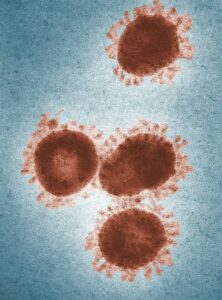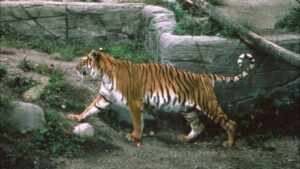What if the key to keeping our pets healthier lies in their genes? Not the jeans they’d never wear, but their genes—the genetic kind! In veterinary medicine, genetics isn’t just an academic concept, it becomes a tool that can predict, prevent, and manage diseases. With advancements in genetic testing, veterinarians can now identify these risks early on, providing personalized care plans and guiding breeding practices to improve the well-being of our pets and reduce the spread of hereditary diseases. Let’s learn about veterinary genetic
Table of Contents:
- An Intro to Genetics
- Genetic Mutations and Disease Susceptibility
- Genetics and Specific Breeds
- Future of Genetic Research with Veterinary Medicine
An Intro to Genetics

Genetics is the genetic makeup and phenomena of an organism, type, group, or condition. Scientists study genes, which is a specific DNA sequence that expresses an inherited characteristic, to try and predict what characteristics an organism will have. Inheritance comes from the combination of different alleles, which is a copy of a gene that comes from the mother and the father. Only one of these traits can be expressed, that’s where dominant and recessive alleles come in. It is also possible to have other factors like multiple genes determining one trait (known as polygenetic traits) or having a trait being linked to the X or Y chromosome (known as sex-linked inheritance). With this brief overview into genetics, let’s dive into how this plays a role in real life.
Genetic Mutations and Disease Susceptibility

Mutations can cause genetic diseases passed down from the Mendelian inheritance patterns mentioned in the introduction (recessive, dominant, sex-linked, etc.).
In autosomal dominant disorders, it only takes one allele to reveal the characteristic. Therefore, all animals who have a copy of the impacted allele will express it. This makes it easy to detect and regulate in animals.
However, it is more difficult to guard against autosomal recessive disorders. The animal must have two of the abnormal gene to be able to express it, yet it can be a carrier with only one copy. Being a carrier means that future generations may produce the trait.
If a dominant allele undergoes a mutation, it will be passed down. Yet if it were in a recessive gene, it would not be obvious. Even so, both of these types of inheritance patterns increase disease susceptibility by spreading disease-related genes, regardless of how long it will take.
All the same, other factors like the environment impact proneness to disease as well. Feline Infectious Peritonitis (FIP) is a complex and often fatal disease caused by mutation of a strain of the feline coronavirus (FCoV) that causes mild gastrointestinal illness. There is a greater impact on young cats in environments like pedigreed catteries, shelters, and foster/rescue facilities since there are ALOT of cats, which increases the risk of infection.
Veterinary Genetic and Specific Breeds

Pedigreed animals are more susceptible to certain diseases compared to random-bred ones. This suggests that selective breeding can impact susceptibility. For example, a recessive genetic disorder called progressive retinal atrophy (PRA) is characterized by the degeneration of photoreceptor cells in the retina, leading to progressive vision loss and eventual blindness. When a pair of recessive alleles are together in closely related animals, such as purebred dogs, the trait is likely to appear.
As mentioned before, these types of attributes are difficult to detect and only has the chance of appearance when bred with another carrier. The specific gene involved can vary depending on the dog breed and the PRA. Some purebred dog breeds like the Irish Setter, the Labrador Retriever, and Golden Retriever are more susceptible to this disorder since they have a higher prevalence of mutations in those specific genes. Even so, genetic testing is available for some of these mutations, allowing for early identification and management of the condition in affected breeds.
Future of Genetic Research with Veterinary Medicine

Animal genetic testing follows in the footsteps of human genetic testing. Ever seen those websites that say they are able see your cat or dog’s ancestry with just a bit of their DNA? Well, unlike human genetic testing, there are little regulations to animal genetic testing, therefore it is important to be cautious when approaching these tests.
Even so, it is important to try to understand your pet’s genetic information (from a reliable source like your vet) to prepare for any potential health risks. What exactly are the tests you can consider? Breed specific tests and general tests are the two main types. Both have their pros and cons, but with today’s technology, they cannot completely to count for how complex genetic inheritance is.
As previously mentioned, a considerable amount genetic problems have multiple factors that decide for gene expression. Hopefully, as the industry continues to grow, scientific advancements do as well, bringing an age of happier and healthier pets.




